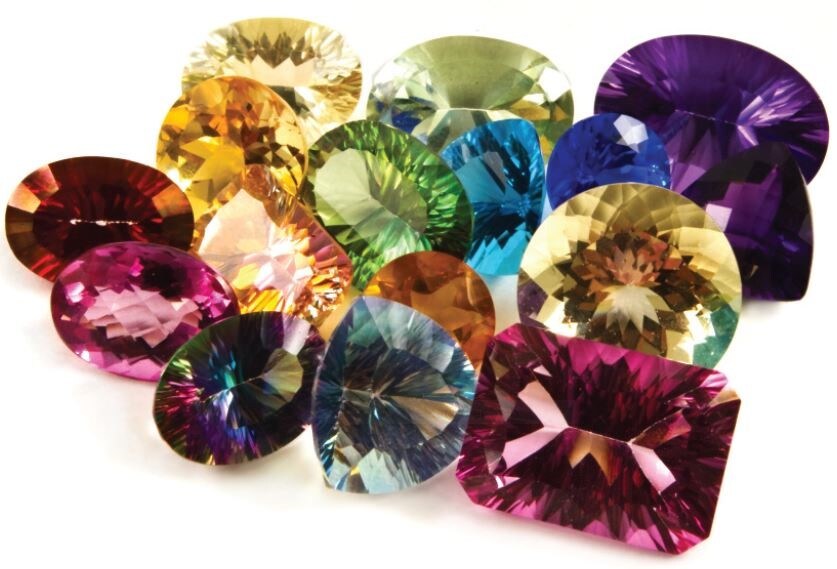Gemstones are a big business across the world. In 2018, $22 billion of gemstones were sold globally, and the market continues to experience 4.8 percent year-over-year growth. X-ray fluorescence (EDXRF) is a valuable gemology tool used to determine the origin and authenticity of gemstones.
As the demand for gemstone jewelry and ornaments continues, synthetic gemstones are driving part of this growth. How can you tell the difference between an authentic gemstone that forms naturally within the earth and a cheaper synthetic gemstone manufactured in a lab?
To efficiently determine the authenticity of gemstones, gemology labs are turning to energy dispersive X-ray fluorescence (EDXRF), a method widely used for the chemical analysis of materials. Using EDXRF, gemologists irradiate a gemstone sample with high-energy X-rays and collect the fluorescence radiation emitted to determine the elemental composition of the gemstone, including trace elements at different concentrations.
EDXRF provides a fast, cost-effective, and non-destructive way to determine the authenticity of gemstones such as rubies, emeralds, and sapphires down to their location of origin—whether that be Colombia, Brazil, Afghanistan, Zambia, Zimbabwe, or another country. By examining the presence of trace elements, researchers can distinguish between a valuable natural gemstone and a quasi-worthless one that’s been synthetically manufactured.
Using the Thermo Scientific ARL QUANT’X EDXRF Spectrometer, for example, gemology labs can obtain compositional information about gemstones within minutes. By being mounted on a custom-made sample holder or placed in an XRF cup sealed with a 4-micron thick polypropylene film, gemstones can be analyzed without being damaged. The instrument is fitted with the latest-generation silicon drift detector, offering excellent sensitivity for the analysis of trace elements across the periodic table. Moreover, the compact footprint makes it easy to transport the spectrometer to wherever gemstone analyses are needed.

The Thermo Scientific ARL QUANT’X EDXRF Spectrometer offers a fast, cost-effective, and non-destructive way to determine the authenticity and geographical origin of colored gemstones.
With the ARL QUANT’X EDXRF Spectrometer, gemological labs can obtain measurements comparable to those of a Laser Ablation Inductively Coupled Plasma Mass Spectrometer—a semi-destructive analysis technique often used as a reference for gemstone analysis—without damaging their gemstone sample.
As the market for gemstones continues to grow, EDXRF is an important technique for establishing the value of these precious stones. With the ARL QUANT’X EDXRF Spectrometer, gemologists can quickly and non-destructively quantify their elemental composition, determining the authenticity and geographic origin of a wide variety of gemstones prized by cultures around the globe.
To learn more, see our application note about determining the origin and authenticity of gemstones with ARL QUANT’X EDXRF Spectrometer.
Pascal Lemberge is an Application Specialist for EDXRF at Thermo Fisher Scientific.
//
Connect with an expert: https://www.thermofisher.com/us/en/home/global/forms/industrial/spectroscopy-materials-analysis-inquiries.html
Hi
I have a large round brownish orange gemstone that I would like to know if it is real, It was given to my mother in the 1970 buy a friend who was Indian and brought it over from India